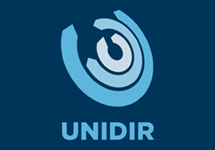April 21, 2017
Elena Sokova
CNS Deputy Director Elena K. Sokova discusses risks of nuclear weapons and materials falling into wrong hands and provides an assessment of international efforts to deny terrorists and non-state actors access to these weapons and materials in her chapter in the new UNIDIR study Understanding Nuclear Risks.
Non-State Actors and Nuclear Weapons

“The majority of nuclear security experts identify two primary scenarios involving nuclear weapons and non-state actors. The first scenario involves the acquisition of a nuclear device from the existing arsenals of nuclear-armed States by terrorists or other non-state actors. The second scenario envisions the construction of a crude nuclear bomb by non-state actors using special nuclear materials—highly enriched uranium (HEU) or plutonium (Pu). The actualization of each of these scenarios would be very difficult, and the probability of a successful theft and detonation of an actual nuclear weapon or manufacturing of an improvised device by non-state actors is considered to be low. Yet, this probability is not zero.
. . .
International and national efforts of the past 15–20 years to reduce vulnerabilities and lower the risk related to non-state actors acquiring and using nuclear weapons have yielded some tangible progress. This work, however, is far from being finished. The security upgrades and the reductions in nuclear arsenals and stocks have been limited, uneven, and in many instances difficult to measure due to the lack of transparency on the part of States. At the same time, the digital age and other new and emerging technologies have opened up new vulnerabilities and threats that can be exploited by non-state actors. Unfortunately, both the understanding of these new risks and strategies to address them are lagging behind, adding to the uncertainties in assessing the risk of non-state actors vis-à-vis nuclear weapons..”
